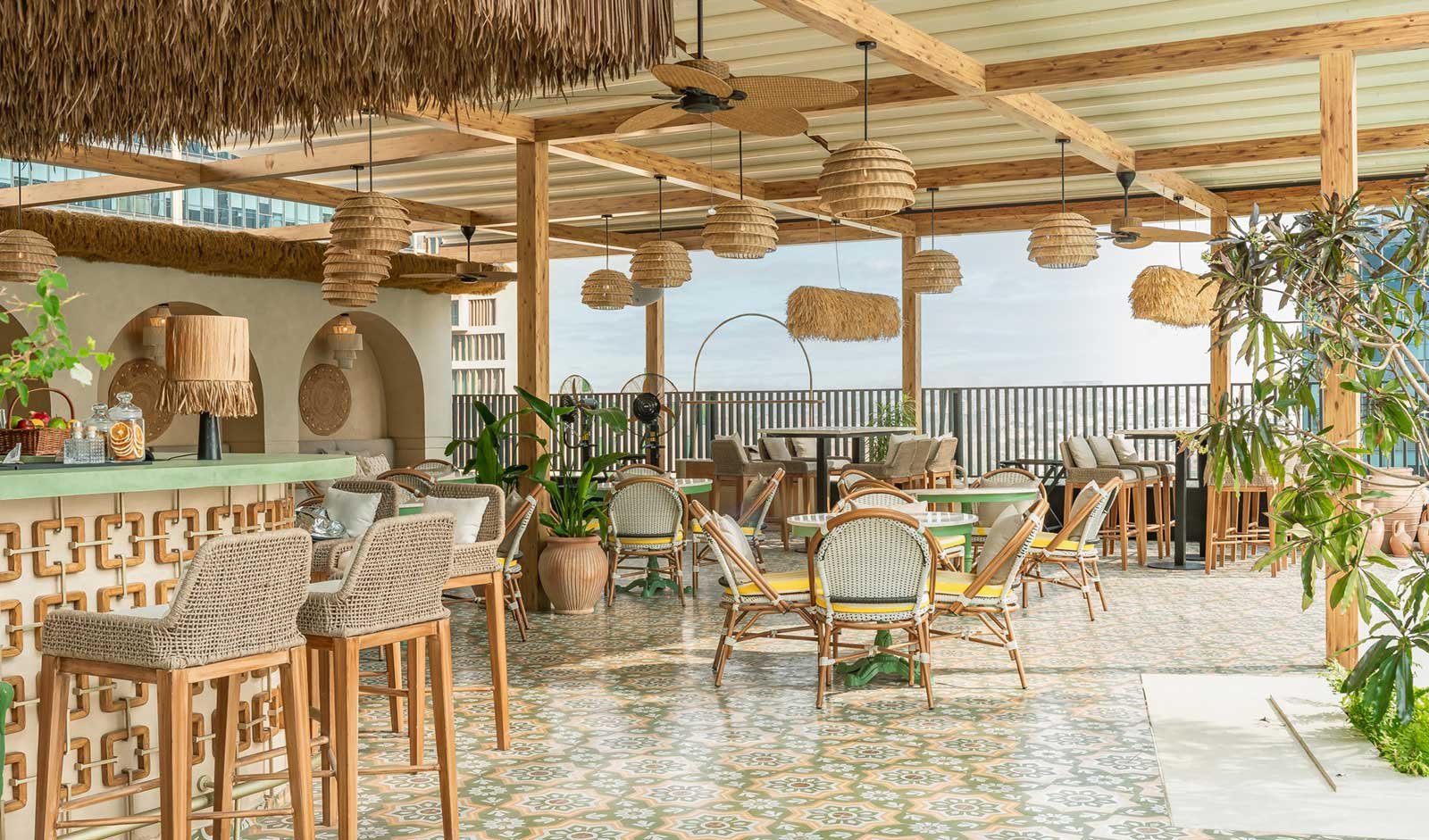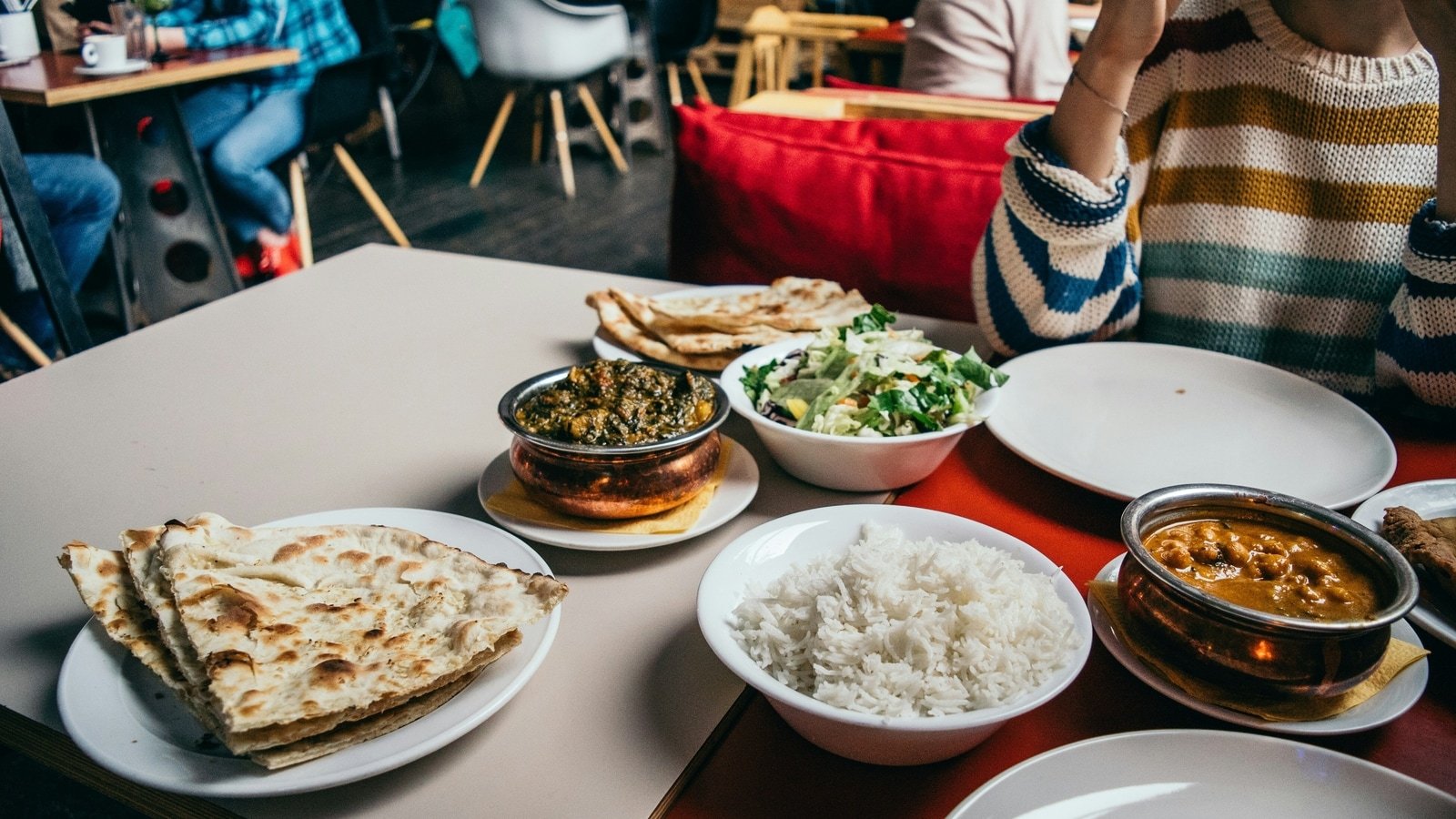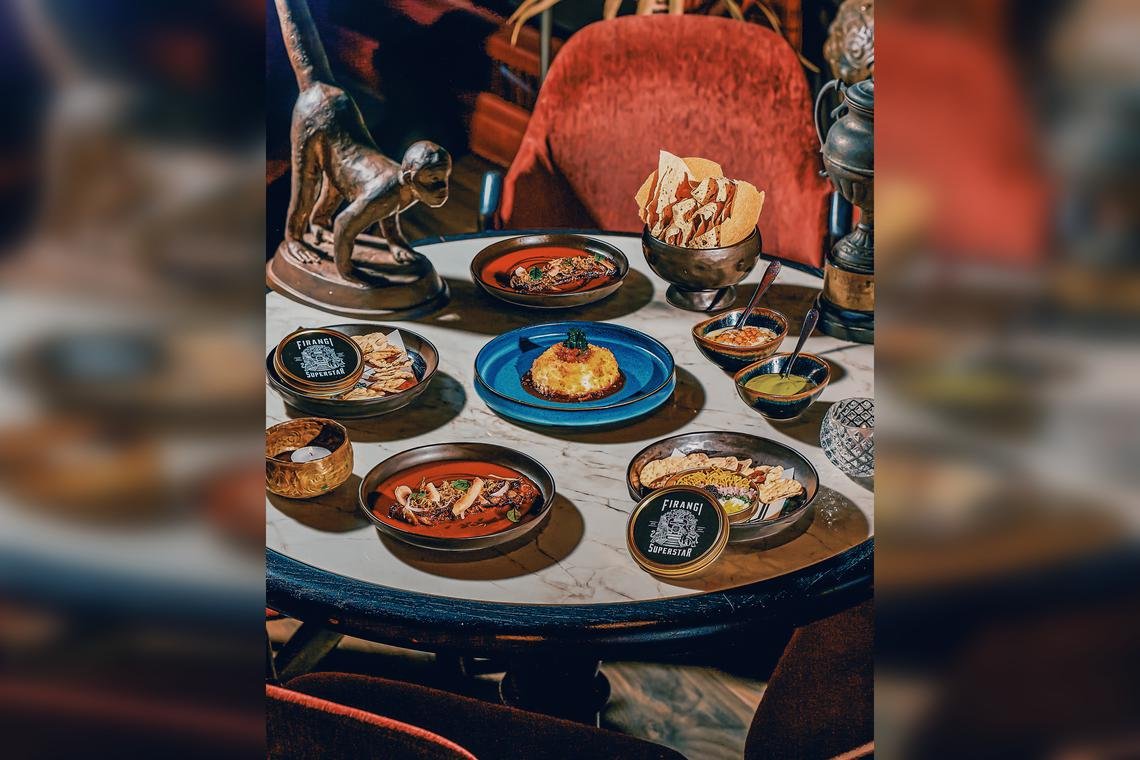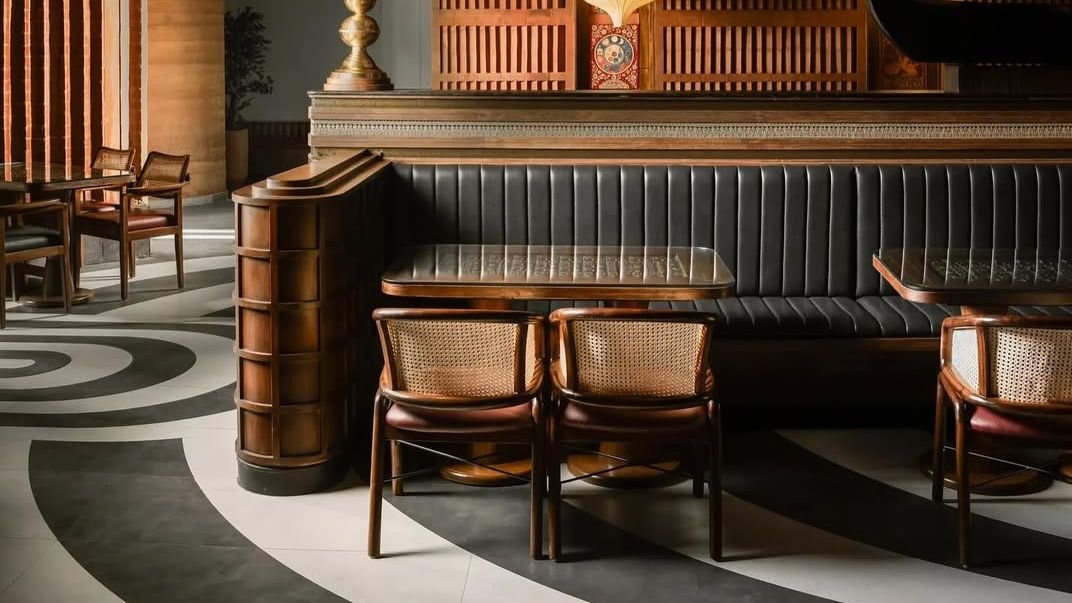Restaurants & Food
The Future of Restaurants: How Cities Are Shaping the F&B Scene in 2025

The cornerstone of a successful fine-dining restaurant lies in delivering an exceptional experience that guests will remember long after their meal. It all begins with exceptional service—staff should be thoroughly trained, highly attentive, and well-versed in the menu to deliver a level of sophistication and care that defines fine dining. The trends in fine dining are local and seasonal menus, sustainability and zero waste cooking, chef-driven storytelling, plant forward dining, pop-ups and integration of technology. The market was valued at USD 166.86 billion in 2024 and is expected to grow at a compound annual growth rate (CAGR) of 6.54%, reaching approximately USD 243.17 billion by 2030.
The Ambience
Ambience plays a crucial role in enhancing the overall experience. Whether designed as an intimate, tranquil retreat or a lively, contemporary space, the setting should reflect the restaurant’s character and connect meaningfully with its guests.
Staff Training
Rigorous and ongoing staff training is also essential—culinary and service teams are continuously coached to maintain excellence, adapt to evolving menus, and reflect the brand’s values with every guest interaction.
Tusheeta Khanna, Director of EnCanto Restaurant said, “Hiring passionate, well-trained staff, maintaining strong supplier relationships, and prioritizing guest experience over everything else are essential. Finally, consistency across operations, innovation in offerings, and a clear brand identity complete the formula.”
Quality and consistency
Quality and consistency are the foundations of guest trust and brand reputation. To uphold these standards, leading restaurants implement streamlined kitchen workflows, ensuring precision and uniformity in every dish.
Prashant Issar, Managing Director of Bellona Hospitality said, “Every element of the dining environment contributes to consistency. From lighting, music, and temperature control to hygiene and table settings, these subtle but vital details work together to create a seamless, uninterrupted experience across all visits.”
“We conduct regular kitchen audits, chef training, and tasting sessions to ensure consistency in every dish. Our culinary philosophy prioritizes craftsmanship and discipline, ensuring that guests receive the same high-standard experience each time they visit,” commented Khanna.
“At Bellona Hospitality, this commitment is taken further with initiatives like the Bell Coins program, which captures guest preferences and behaviors across all locations through a centralized POS system. This empowers staff to offer a personalized, high-touch experience tailored to individual guest expectations, without compromising consistency or brand standards,” highlighted Issar. In essence, quality and consistency in fine dining aren’t just processes—they are promises, delivered through precision, people, and personalized care.
Service excellence
A strong focus on service excellence is maintained through seamless coordination between front-of-house and back-of-house staff. Feedback is regularly analyzed, internal audits are conducted, and staff meetings are held to identify improvements and uphold best practices.
Issar pointed, “We undertake continuous learning and development programs to ensure that the staff is updated and have the necessary know-how to attend guests and deliver a memorable experience every time.”
Marketing & Branding
A distinct brand voice is consistently applied across all platforms—social media, websites, and delivery apps—through engaging visuals, curated content and regular updates.
Issar noted, “Guest interaction is a core focus. Through campaigns and feedback channels, guests are encouraged to share genuine experiences, which are actively used to refine offerings and improve service. Loyalty data from the Bell Coins program and digital insights help personalize marketing efforts and drive targeted outreach.”
Khanna added, “We use aesthetic visuals, influencer collaborations, themed events, and immersive social media to create aspirational value. Offline, we focus on curated experiences and collaborations that align with our brand. Seasonal campaigns, strong visual identity, and emotional branding help us stay top-of-mind.”
“We also have a strong digital presence, the same has been created by disseminating high quality content on Instagram, Facebook & LinkedIn, regular story telling around our chefs, ingredients, team and guests,” said Sharad Madan, Co-founder, Begam.
Strategic use of reels, behind-the-scenes videos, and UGC (User-Generated Content) helps in reaching more audiences. Good reviews are amplified; concerns are resolved quickly and personally.
Menu innovations and Operational Efficiency
Menu innovation is central to the guest experience, driven by creativity, regional exploration, and the use of premium ingredients. Each brand regularly refreshes its offerings to stay relevant and engaging.
Khanna said, “At EnCanto, menu innovation is not just about introducing new dishes—it’s about curating experiences rooted in culture, seasonality, and creativity. Our culinary team constantly explores traditional Mexican recipes and reimagines them with modern techniques and global influences.”
“On the operations side, efficiency is achieved through strong kitchen-service coordination, the use of smart POS systems, and tech-enabled workflows. These tools ensure consistency, manage inventory more effectively, and streamline order processing,” added Issar.
Commenting on this, Madan said, “We actively monitor guest preferences, reviews, and industry trends to introduce items that are relevant and in demand whether its plant-based dishes, regional cuisines, or modern reinterpretations of classics. We also focus on plating, storytelling, and pairings to offer a complete sensory experience. While creativity drives our offering, efficiency sustains the business.”
Technology
Technology must be embraced, with up-to-date websites, an active online presence, and collaborations with third-party apps to promote user convenience. A strong digital footprint is now required, as fine dining moves outside the physical place.
While, the future of fine dining is being driven by changing consumer preferences, advancements in technology, and an increasing focus on immersive experiences, sustainability, and tailored hospitality, we can surely say that with these tips you can achieve success.
Restaurants & Food
28 new restaurants in India you should grab a meal at this August – Vogue India
Restaurants & Food
The Taste by Vir Sanghvi: Indian restaurants shine globally with Michelin stars and authentic flavours

You have probably heard of Semma, the only Indian restaurant in New York to win a Michelin star. And of Gymkhana, the only Indian restaurant with two Michelin stars in London. Of Jamavar, the only Indian restaurant in the world to have won Michelin stars in three different avatars in three different cities: London, Doha and Dubai.
What, you may well ask, do these restaurants have in common?
There are two answers to this question. The first is the obvious one: they are all Indian restaurants run by chefs who have worked or trained in India. Vijaya Kumar of Semma is very proud of cooking the authentic cuisine of Tamil Nadu’s not-so-elevated castes and makes it hot and spicy. (He started out at the Taj Connemara in Chennai.) His boss, and one of the founders of Unapologetic Foods, which owns Semma, Chef Chintan Pandya, says that the group gets its name from its determination to refuse to apologise for the flavours and oil that characterise Indian food. (Chintan is ex-Oberoi.)
In London, one of the first things that Karam Sethi, the chef-founder of Gymkhana, said to me when I called to congratulate him on Gymkhana’s two stars was “it’s real Indian food, not ‘modern’ Indian.” Gymkhana serves the sort of food Indians actually eat, not a poncy, spice-deprived version. Gymkhana’s Executive Chef Sid Ahuja is ex-Oberoi and Sethi himself trained with ITC.
The most recognisable Indian of the top global restaurants is Jamavar. It was founded by Dinesh Nair, whose family used to own Leela Hotels, and is run by his whiz-kid daughter, Samyukta. The London Jamavar is international in clientele but you will nearly always see a top Indian movie star or cricketer there. This may have something to do with the fact that its chef, Surender Mohan, commands after his years working with the Leela group in India.
Samyukta and Surender took Jamavar to Doha where it became just one of two restaurants to win a Michelin star. (The other restaurant with a star is run by Alain Ducasse.) Next, they opened in Dubai and within a few months of opening, they had a star there too.
I met Surender at the Michelin ceremony in Dubai and was pleased to see that he was one of the few chefs not to be intimidated by the occasion and he gave the longest and best speech of the evening. But then I guess he is now used to attending these events in city after city.
Clearly something new and unusual is happening with Indian food abroad even if we don’t fully understand it here in India. There have been, broadly, four phases with Indian food in the West. The first was the ‘ethnic food’ phase when Indian food became the browner equivalent of chop suey and restaurants served mostly made-up Indian dishes at inexpensive prices.
The second was when Indian food went upmarket but was also Frenchified and plated. In the UK, restaurants serving this kind of food were celebrated and some got Michelin stars. In New York, Floyd Cardoz served two kinds of cuisine. At Tabla, he served a nouvelle take on Indian food and got three stars from the New York Times. But downstairs, at the Bread Bar, the food was more basic and less nouvelle. Even so, the general rule was that if you wanted rave reviews and high-profile rich guests, then you moved away from traditional Indian.
The third phase coincided with a global change in food preferences when French food ceased to be as admired as much. As El Bulli and later, Noma, set the trend, this was reflected in Indian food too. Gaggan Anand worked with the Adria brothers of El Bulli and opened a restaurant in Bangkok that served the kind of Indian food nobody had imagined could exist. Also, in Bangkok, Garima Arora opened Gaa which went on to win two Michelin stars. There was a fair amount of cross-fertilisation. Garima had worked with Rene Redzepi at Noma and with Gaggan. Redzepi himself had worked at El Bulli.
Almost simultaneously, Manish Mehrotra, whose resume included no great restaurants, invented his own version of modern Indian cuisine at Delhi’s Indian Accent. Mehrotra’s background was oriental cuisine so he had no interest in Frenchifying his food. Mehrotra and Gaggan ended up being the most influential Indian chefs of this century with their dishes being copied all over the world.
Himanshu Saini, the only Indian chef with a restaurant that has three Michelin stars (Dubai’s Tresind Studio) worked with Manish and is candid about his debt to the master.
But now I think we are into a third phase. People want Indian food without the frills. They want to eat like Indians eat in India. Vikas Khanna, India’s most famous chef, opened Bungalow in New York, serving food that was no different to the food he would serve in India and got three stars from the New York Times, and there’s usually a queue for tables outside his restaurant. At the less expensive end of the market Dhishoom which claims to be inspired by Mumbai’s Irani restaurants is so successful across the UK that it has now set its sights on America.
Of course, no change is absolute. There are still Bangladeshi curry houses calling themselves Indian restaurants. The Frenchified expensive Indian restaurants survive. The Gaggan-style modern Indian is still a rage.
But the trend is clear: Keep it simple and keep it spicy.
Restaurants & Food
Food Picks: Modern Indian with a Western twist at Firangi Superstar

SINGAPORE – Do not be fooled by Firangi Superstar’s plain terracotta exterior. There is nothing minimalist about the experience here.
It overwhelms before the first bite even hits the table, spinning you through rooms crammed with memorabilia. Think American film-maker Wes Anderson on a trip through Delhi, a kind of kitschy fantasyland for colonial nostalgists wrapped in ornate wallpaper and studded with vintage firearms.
Thankfully, this meeting of worlds is far more amicable when confined to the kitchen of this modern Indian restaurant, which opened in 2021.
Firangi Superstar’s decor is as bold as its menu.
PHOTO: FIRANGI SUPERSTAR
Have a seat. Red? Blue? Cushion? Chair? Oh, here comes the menu, recently revamped and folded into a newspaper – with actual clippings, by the way, just in case you were done gawking at the mounted moose heads on the wall and wanted something else to look at.
Open it up. Today’s big story is a list of dishes, both old and new, Indian and international, all with characteristically eyebrow-waggling names.
Some riff off old iterations – This Is Also Not Aloo Gobi ($18++) still holds the traditional curry at arm’s length, even as it borrows its taste. Others squeeze in a winky pun – We’re Goan-Ing To Porto! ($96) beckons to diners with grilled Iberico pork and sorpotel chilli sauce.
Big personalities work only if backed up with big flavours, and Firangi Superstar’s bite is as good as its bark. Starters like Papi’s Jammed Gun ($29++), wagyu beef tartare with caviar, grated egg and gunpowder spice, and Big Baller Peperoner ($28++), its version of paneer Manchurian, with fried burrata and Manchurian chilli sauce, expertly fuse Western ideas with south Asian flair.
The Bengal Bake-Off from Firangi Superstar.
PHOTO: FIRANGI SUPERSTAR
Off to a riotous start, I move on to mains. The Bengal Bake-Off ($108++) is trotted out in show-stopping fashion: a salt-baked seabass emerges from its crust, tender and steaming, and is robed in Kasundi cream.
Back In The Saddle ($21++ for 100g) triumphantly rides in on tandoori-spiced lamb, crowned with confit garlic and chilli leaf. All these dishes also come in vegetarian form, should you so desire.
In the middle of this lip-smacking extravagance, a few humble sides quietly sneak their way onto the table. Turn your attention immediately to the black garlic naan ($14++). Look how pillowy the bread is, breathe in its nutty fragrance. You already know it is going to be a knockout.
End the night with some banoffee fritters ($14++) or Rasmalai “tres leches” ($16++). Recline back on your throne of pillows, cocktail or royal melon lassi ($20++) in hand.
Firangi – Hindi slang for foreigner – or no, one really does feel like a superstar here.
Where: 01-03, 20 Craig Road
MRT: Maxwell/Tanjong Pagar
Open: Noon to 2.30pm, 5.30 to 10pm (Mondays to Saturdays)
Info:
www.firangisuperstar.com
-

 Brand Stories3 weeks ago
Brand Stories3 weeks agoBloom Hotels: A Modern Vision of Hospitality Redefining Travel
-

 Brand Stories2 weeks ago
Brand Stories2 weeks agoCheQin.ai sets a new standard for hotel booking with its AI capabilities: empowering travellers to bargain, choose the best, and book with clarity.
-

 Destinations & Things To Do3 weeks ago
Destinations & Things To Do3 weeks agoUntouched Destinations: Stunning Hidden Gems You Must Visit
-

 Destinations & Things To Do2 weeks ago
Destinations & Things To Do2 weeks agoThis Hidden Beach in India Glows at Night-But Only in One Secret Season
-

 AI in Travel3 weeks ago
AI in Travel3 weeks agoAI Travel Revolution: Must-Have Guide to the Best Experience
-

 Brand Stories1 month ago
Brand Stories1 month agoVoice AI Startup ElevenLabs Plans to Add Hubs Around the World
-

 Brand Stories4 weeks ago
Brand Stories4 weeks agoHow Elon Musk’s rogue Grok chatbot became a cautionary AI tale
-

 Brand Stories2 weeks ago
Brand Stories2 weeks agoContactless Hospitality: Why Remote Management Technology Is Key to Seamless Guest Experiences
-

 Asia Travel Pulse1 month ago
Asia Travel Pulse1 month agoLooking For Adventure In Asia? Here Are 7 Epic Destinations You Need To Experience At Least Once – Zee News
-

 AI in Travel1 month ago
AI in Travel1 month ago‘Will AI take my job?’ A trip to a Beijing fortune-telling bar to see what lies ahead | China









